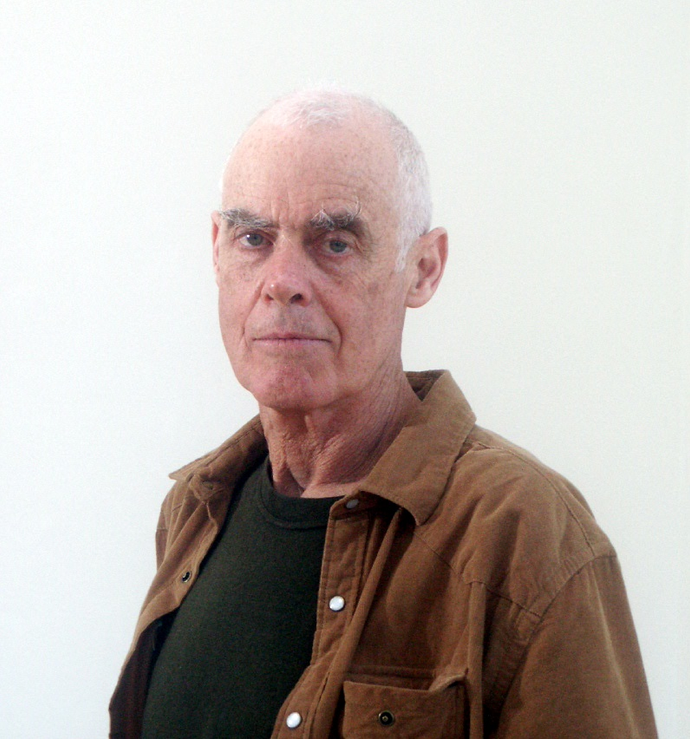
Richard Long
Richard Long is a renowned British land artist celebrated for his innovative works and unique artistic vision, which have garnered numerous accolades and honors. Since the late 1960s, Long has used walking to self-express in his land art practice. However, throughout his prolific career, he has explored various other creative approaches, including text, sculpture, and photography.
Biography of Richard Long
Richard Long was born in Bristol in 1945. He initially enrolled at the West of England College of Art in Bristol but was expelled following an exam assignment. In retrospect, he considers this expulsion a pivotal moment in his artistic journey because the conservative environment at the school did not align with his emerging artistic sensibilities. This experience prompted him to further develop his unique approach.
Subsequently, Long relocated to London and pursued his studies at Saint Martin's School of Art. During his time as a student, he created one of his earliest and most famous works, "A Line Made by Walking," in 1967. This groundbreaking piece laid the foundation for his vision of art as a form of walking and leaving footprints in the grass. It marked the beginning of his exploration of art as a means of freedom, where creation could occur anywhere and be understood as a journey through time, space, and distance. The distinctiveness of his approach has been captured in photographs due to its inherently transient nature.
Since 1967, Richard Long has developed his own distinctive artistic language, engaging in conceptual landscape art by walking and creating in various exotic locations around the world. In addition to making art by leaving footprints, he has collected materials, typically stones or wood from these places, to fashion temporary passage works. These works have been complemented with text since 1969 and documented through photography.
In the 1980s, Long's practice evolved to incorporate wet mud or clay, which he used to craft images, series, and handprint shapes on walls. He also created sculptures of lines and circles from slate, stone, and driftwood. Long found beauty in this process, as the majority of the image was composed of water. The wet mud required quick application to prevent drying, adding a unique charm to the process. Often using mud from Avon, his place of origin, he connected it with ancient archetypes of creation and the origin of life. These cosmic splashes took on a life of their own, and Long's body, hands, and life served as direct mediums with no intermediary tools. This approach extended to his walking sculptures. Long emphasized that he was not interested in figurative art; instead, he considered himself both the figure and the energy that shaped his art, a metaphor for his existence in the world. For him, it represented physical and direct bodily engagement with the world, celebrating this universal contact. Since communication was the primary goal of his artwork, Long described being an artist as a constant process of making decisions—actions taken in solitude and intimacy, intended to deeply resonate with another human being.
Richard Long's work has been featured in numerous international exhibitions and museums around the world. His art can be viewed in permanent displays at institutions like Tate and Bristol City in Britain. Additionally, his works were exhibited in galleries in the United States, Australia, and Switzerland. In 2009, the Tate Museum organized a retrospective exhibition titled "Heaven and Earth" to showcase his art. Long has participated in significant events in the art world and represented Britain at the 37th Venice Biennale in Italy in 1976.
The artist holds the distinction of being the sole artist to have been nominated for the Turner Prize three times before ultimately receiving it. Specifically, he was short-listed in 1984, 1987, and 1988, ultimately winning the award for his work "White Water Line" in 1989. Additionally, he has received several prestigious honors, including the Chevalier de l’Ordre des Arts et des Lettres from the French Ministry of Culture in 1990, election to the Royal Academy of Arts in London in 2001, and the Praemium Imperiale for sculpture from Japan in 2009. His contributions to art were further recognized in 2013 when he was awarded a CBE (Commander of the Order of the British Empire).
Richard Long continues to live and work in his hometown, Bristol.
Years:
Born in 1945
Country:
United Kingdom, Bristol
Gallery: